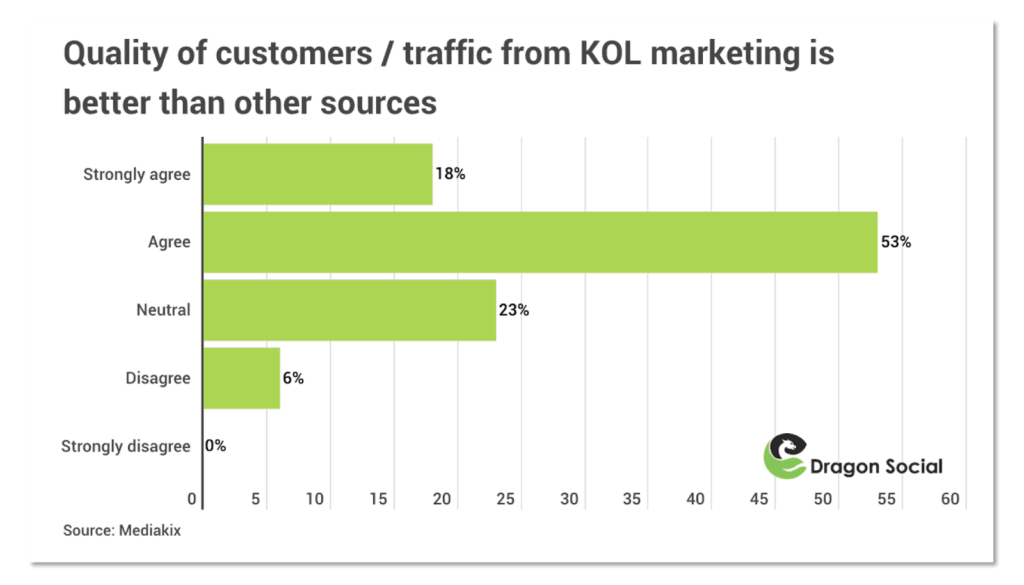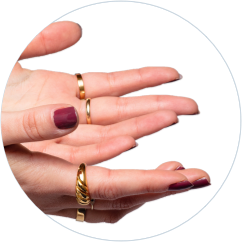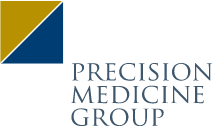Creating positive campaign side effects through PR

The best marketing approach is integrated – a concept our newest leader, Jessica Griffith, knows a thing or two about. Coming to PRECISIONeffect as SVP of Public Relations, Jessica has spent over a decade helping brands craft and amplify their story over multiple channels. Today, she shares why public relations (PR) is critical to every healthcare and pharmaceutical brand’s commercial success.
1. You’ve been championing PR efforts for healthcare brands for over a decade. Why is PR such an important component of a commercial campaign?
The foundation of PR is all about messaging, and that story is truly the bedrock of any campaign. If you don’t know what you want to say and who you want to say it to, you’ll waste your budget trying to say everything to everyone.
There’s a misconception that PR is “fluff” and promotional, but if you do it right, it isn’t. We take a data-driven approach to move the needle, looking at the metrics that matter along each step of the earned media journey. In the initial stages, this means looking at media outlet reach and impact to discover where we can amplify our message most effectively with the resources available. Once we see the fruits of our labor, we contextualize the results by identifying impact on share of voice, brand tone and valence, and real-world reach based on secured earned media opportunities.
Dialing back from metrics and taking a larger view, PR needs to be part of every commercial campaign because it contextualizes and amplifies your message in a different way than advertising or other promotional channels. Each excels at translating and communicating your value proposition (VP) in a different way.
For example, advertising teams excel at honing your VP down to its essence and presenting that essence in a succinct, exciting, actionable way. Social media teams excel at using brand imagery and tone to foster interactions among relevant groups in relevant spaces.
PR teams excel at framing your VP within a relevant “big picture,” including your WHAT, but also your WHY and/or HOW. A good PR team captures your mission, meaning, and impact on the industry and conveys that information through storytelling across earned media channels, building credibility and exposure in spaces where customers go to learn and engage. We thrive when we can provide a true “surround sound” approach that helps educate and influence customers before, during, and/or after direct outreach efforts from a sales rep or DTC marketing initiative.
In healthcare, this most often involves telling a powerful, scientific (ex. disease state or molecule level) story or driving interest in a product class, novel technology platform or technique. This type of storytelling makes audiences more interested in, and receptive to, the solution you provide.
2. Many brands don’t often think about PR until there’s a crisis or when their reputation is at stake. How can PR enhance brand reputation?
Brand reputation is so important in today’s climate. Today’s consumers are hyper-aware and genuinely seek to hear a brand’s stance on core issues. This is especially true in pharmaceuticals. To boot, the time is ripe for brands to work to enhance their reputation; Edelman’s 2021 Trust Barometer report found that, following the pandemic, businesses were found to be more trustworthy than governments in 16 out of 27 surveyed countries.

Consistent, positive press coverage can certainly enhance reputation. If your leaders are providing solutions, ideas, or even just helpful context to larger industry issues, your reputation as a transformative leader will soar.
On a more tactical level, brands can look to increase trust and public perception through strategic PR campaigns. For example, sharing your success stories, identifying satisfied customers and/or collecting patient testimonials can go a long way in demonstrating a brand’s good will.
We found this to be true with a technology client we worked with. We started a campaign where we partnered with hospitals to tell the success stories of their implementation of our client’s technology through press releases. It helped increase satisfaction with their current customers because of its mutual benefit. The press releases not only promoted the power of the product, but it drove clients to the hospital as well, and helped increase trust among other prospective hospital clients by seeing a competitor put stake in the company publicly.
3. In the direct-to-consumer (DTC) world, we see brands look to influencers to promote a product or service. What’s the equivalent to this in healthcare and how can brands leverage these “influencers”?
In healthcare, we call “influencers” key opinion leaders (KOLs). KOLs are members of the healthcare ecosystem, such as physicians, that are looked upon as a trusted resource publicly. Brands can use KOLs to provide experience-driven education, which is arguably the greatest influencer of all and is a tactic we see DTC brands use everyday through PR boxes and gifts.

Consider KOLs as a brand’s window to experience. If you can develop the right medical advisory board with a diversified group of users, they can help analyze each product or solution in multiple categories and not only help you improve your offering, but share their positive experience with colleagues and patients and serve as an ambassador. Unlike DTC brands though, KOL influence isn’t solely measured in social media followers.
What I would like to relay to brands looking to dive into the world of KOL marketing though is that, at its core, it’s about relationship management and reputation. This is a partnership, there must be give and take. Brands need to make sure both sides are taken care of, respected and elevated. PR teams need to serve as counselor for these relationships.
4. Each year we see the media landscape continue to shrink, with traditional outlets shuttering doors or reducing coverage. Where do you see the future of PR headed?
The PR industry is already shifting towards the future with the typical roles and responsibilities of PR practitioners changing. We’ve watched the role of PR move from a one-off announcement to a critical piece of the commercial funnel. That’s because the need for organizations to maintain their public image is more important than ever – and getting more difficult to do with the shuttering of outlets and, consequently, journalists being stretched thin.As a result, PR practitioners will have to focus on these three tactics to stay relevant and find success:
- Expand media outlets across digital and print. Quality over quantity is always paramount in PR. But, with thinning coverage across the board, brands will need to be open to new mediums and channels such as podcasts, voice, social media publishing, sponsored content and more.
- Personal branding. It shouldn’t be shocking when I say that social media is a key source of information for consumers today. Brand leaders will need to be active and engaged on their personal channels to keep pace with the industry – and it’s a great opportunity to offer transparency and increase brand familiarity by putting a face to the company. Plus, it can bolster a brand’s existing social efforts through cross-promotion across brand channels.
- Provide access and information. Media outlets that have not closed their offices have, instead, cut staff. That means today’s journalists are strapped for time and under immense pressure to deliver sound information. Brands need to continue to speak to the intelligence of our society while still making healthcare accessible. Under these increasing demands, journalists need more copy. They need access to top leaders and scientists. PR practitioners need to be prepared to deliver clear, comprehensible information and available spokespeople during the pitch or risk getting passed over – no matter how compelling your story may be.
Looking for help crafting a winning PR story? We can help. Click here to get in touch.










